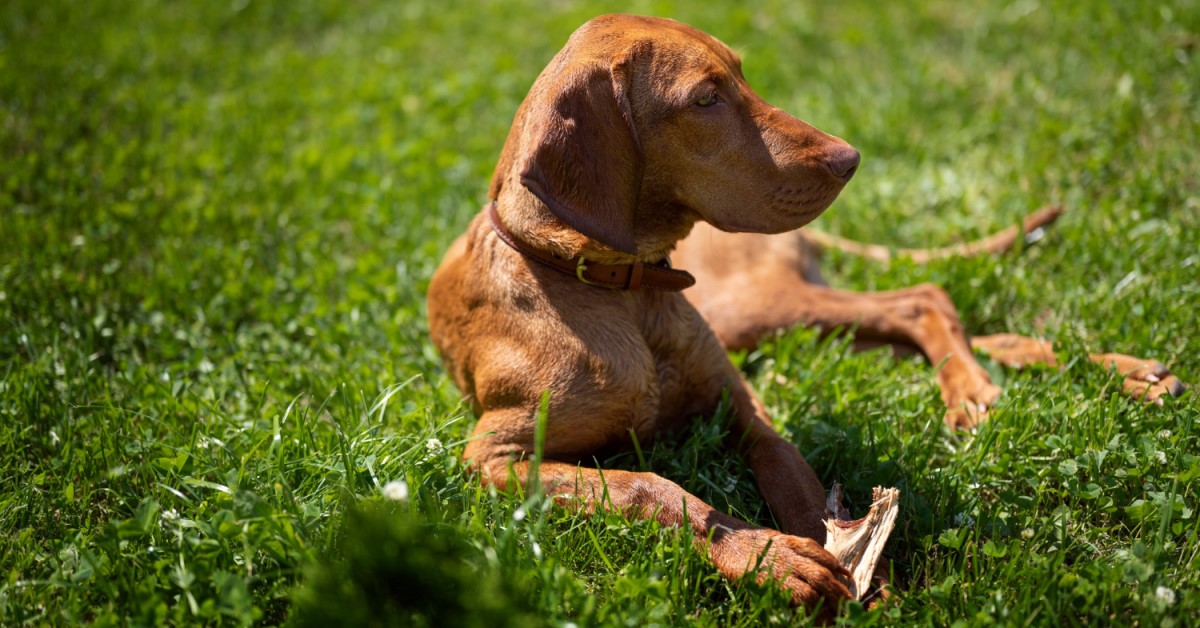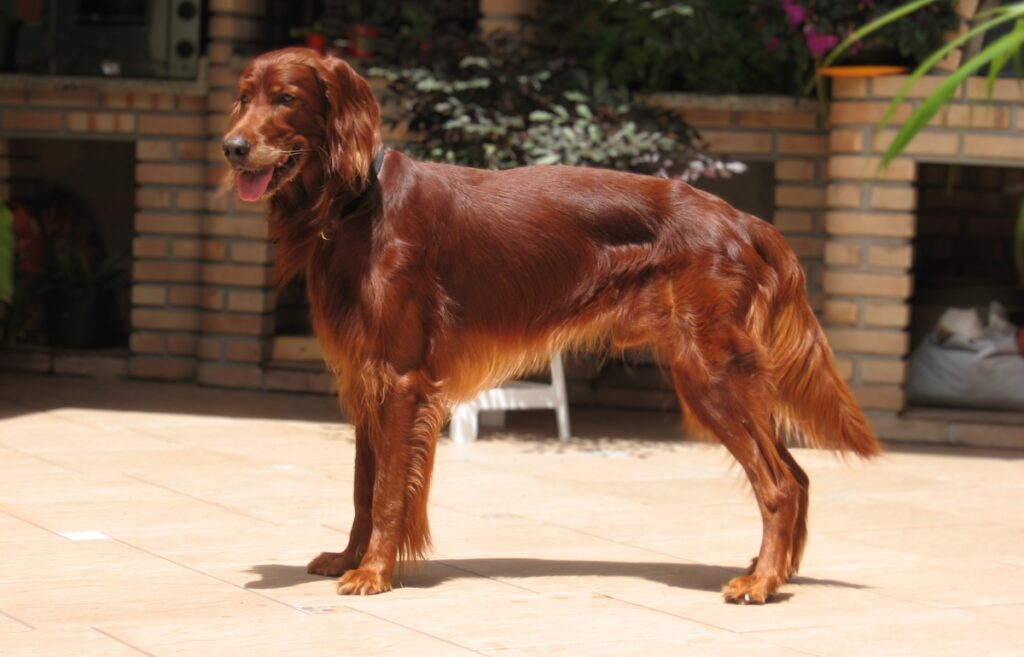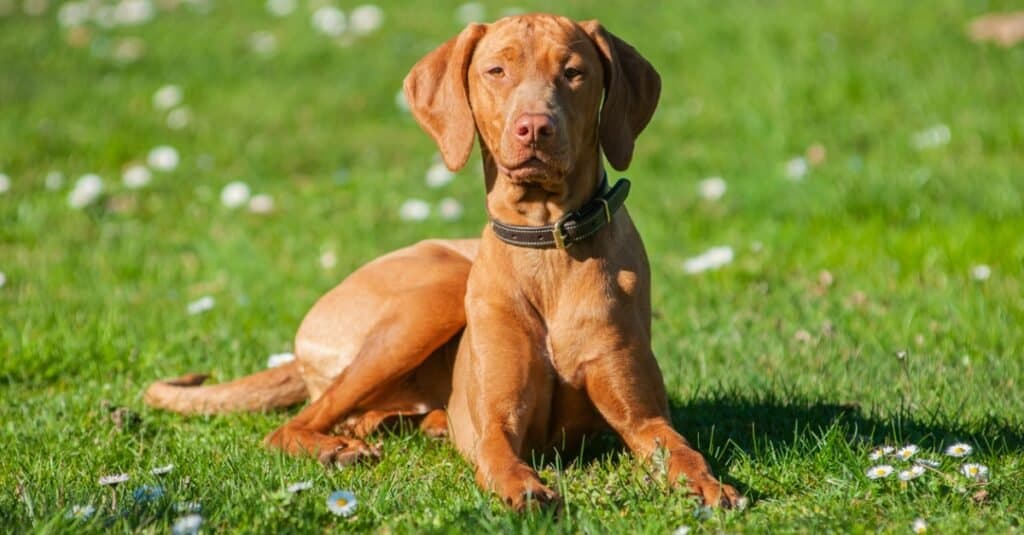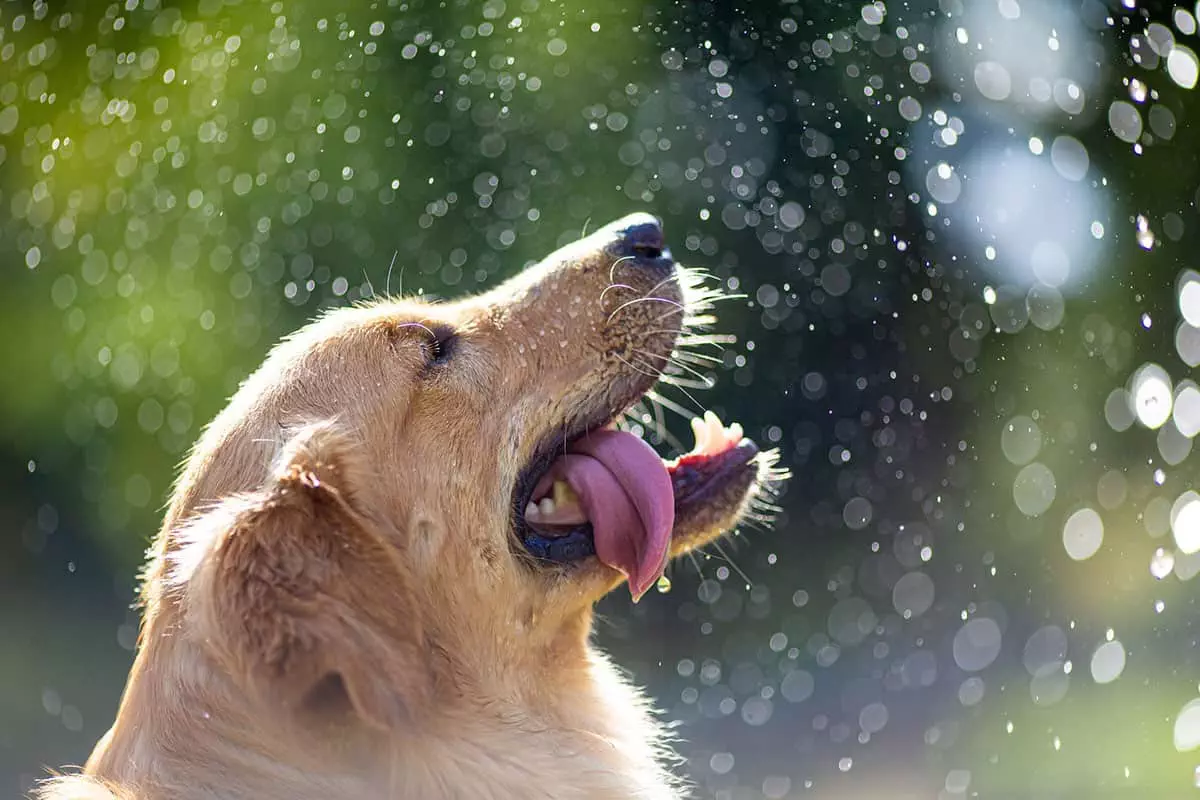Introduction
Embarking on the journey to find the perfect canine companion often leads potential pet owners to consider the allure of red dog breeds. These breeds are not only striking in appearance but also boast a variety of temperaments and lifestyles to fit into many households.
From the affectionate Irish Setter to the bold Shiba Inu, each red dog breed presents a unique blend of personality, energy, and companionship.
Understanding the nuances of their physical characteristics, popular breeds, and grooming needs is essential for any prospective dog owner looking to add a touch of fiery red to their life.

When considering a red dog breed, it’s important to delve beyond their vibrant coats and examine their individual needs and traits.
Whether it’s the protective instincts of an Akita or the high energy levels of an Australian Shepherd, each breed requires a specific approach to training, exercise, and care.
By exploring the popular red dog breeds and their respective lifestyles, this article aims to guide you through making an informed decision, ensuring a harmonious match between you and your future four-legged friend.
Physical Characteristics of Red Dog Breeds
Coat Color
The coat color of red dog breeds is a captivating feature that ranges from light cinnamon shades to a deep, rich mahogany. This spectrum of red is due to the MC1R gene, which influences the pigment production in the fur.
The intensity of the red hue can vary significantly from one breed to another, offering a stunning visual diversity within this color category.
While the Irish Setter is renowned for its glossy chestnut coat, other breeds may exhibit a more subdued rust or a vibrant ginger red, each with its own distinctive charm.
It’s essential to recognize that the red coat is more than just a color; it’s a reflection of a breed’s genetic makeup and history.
For instance, the Vizsla’s golden rust coat is not only beautiful but also serves as camouflage during hunting, a task for which the breed was historically developed. When selecting a red dog breed, appreciating the depth and variety of their coat color can enhance the connection between the pet and owner, creating a bond that goes beyond the aesthetic appeal.
Eye Color

Complementing their striking coats, red dog breeds often possess equally enchanting eye colors that can range from warm amber to rich browns, enhancing their overall allure. The eye color in these breeds is typically harmonious with their coat, creating a cohesive and captivating appearance.
Breeds like the Nova Scotia Duck Tolling Retriever may boast lighter eyes that contrast beautifully with their fiery fur, while others, such as the Rhodesian Ridgeback, tend to have darker eyes that echo the depth of their red coats.
While the coat color is a prominent feature, the eyes of a red dog breed can be just as expressive and are an integral part of their visual identity. The warm gaze of a red-coated dog can be a window into their soul, revealing their temperament and spirit.
As with any breed, the eye color should be clear and bright, a sign of good health and vitality. When admiring these red beauties, one cannot help but be drawn in by their engaging eyes, which reflect the essence of their spirited nature.
Nose Color
The nose color in red dog breeds often complements their fiery coats, typically presenting in shades that harmonize with their overall coloration.
While some red dogs may have a black or dark brown nose, others can exhibit a lighter, liver-colored nose that matches the warmer tones of their fur. This detail, though small, contributes significantly to the breed’s striking appearance and can vary depending on the specific genetics of the dog.
It’s important to note that the nose color, while aesthetically pleasing, can also be an indicator of breed standards and health. For example, in certain breeds like the Irish Setter, a dark mahogany nose is preferred and considered a breed standard.
When observing these red dog breeds, the nose not only adds to their visual appeal but also serves as a testament to their breed’s unique characteristics and the careful breeding practices that have preserved their distinctive traits.
Popular Red Dog Breeds
Irish Setter
Among the pantheon of red dog breeds, the Irish Setter is a true standout with its luxurious mahogany or chestnut coat that demands admiration. As a member of the AKC’s Sporting group, this breed is not only aesthetically pleasing but also brimming with a friendly and outgoing personality.
Standing tall at 25 to 27 inches and weighing between 60 to 70 pounds, the Irish Setter is a picture of grace and vitality, with a life expectancy of 12 to 15 years. Their glossy, fine coat is a hallmark of the breed and requires regular grooming to maintain its luster, as noted by The Spruce Pets.
Irish Setters are more than just their stunning looks; they are affectionate companions known for their sweet disposition and eagerness to bond with their human counterparts. They thrive on interaction and are known to be excellent with children, making them an ideal family pet.
However, potential owners should be mindful of their high energy levels and need for mental and physical stimulation to prevent the onset of separation anxiety. This breed’s protective nature also makes it an effective watchdog, alert to any changes in its environment.
The Irish Setter’s combination of beauty, brains, and loyalty cements its status as one of the most beloved red dog breeds.
Rhodesian Ridgeback
Another majestic member of the red dog breed family is the Rhodesian Ridgeback, renowned for its sleek, red coat and the distinctive ridge of hair running along its spine. This breed exudes a regal presence, standing 24 to 27 inches tall and weighing in at a robust 70 to 85 pounds.
The Ridgeback’s short and smooth coat, which may feature a black mask or small white markings, is low-maintenance, requiring only weekly brushing to keep it in top condition.
With a life expectancy of 10 to 12 years, the Rhodesian Ridgeback is a loyal and affectionate companion, making it a popular choice for families, as highlighted by World Animal Foundation.
While the Rhodesian Ridgeback is known for its dignified temperament and love for family, it is also a breed that commands respect due to its size and strength.
Early socialization is crucial for this breed to ensure harmonious coexistence with other pets and to mitigate its natural inclination towards dominance.
Their intelligence and protective instincts make them excellent watchdogs, yet they are content to be calm and gentle with their pack.
For those seeking a red dog breed that balances a striking appearance with a steadfast temperament, the Rhodesian Ridgeback is an exemplary choice.
Vizsla
Stepping into the spotlight of red dog breeds, the Vizsla is a breed that combines elegance with athleticism. Originating from Hungary, these medium-sized dogs are known for their distinctive golden-red coats and lean, muscular frames.
Standing between 21 to 24 inches and weighing around 44 to 60 pounds, Vizslas possess a short, smooth coat that is a breeze to maintain, requiring only occasional grooming to keep their sheen, as per The Spruce Pets.
With a life expectancy of 12 to 14 years, these dogs are a testament to the beauty and vitality inherent in red dog breeds.
The Vizsla’s temperament is as warm as its coat color, with a reputation for being affectionate and loyal to their human families. They are known for their high intelligence and eagerness to please, which makes them highly trainable from an early age.
However, they are not just couch companions; Vizslas are bursting with energy and require ample exercise—up to 90 minutes daily—to keep them happy and healthy.
Their sensitivity and strong desire for companionship mean they thrive best in environments where they can engage closely with their owners, making them a beloved choice for active individuals and families alike.
Australian Cattle Dog
Among the vibrant red dog breeds, the Australian Cattle Dog stands out with its unique mottled or speckled coat that can be red or blue, earning it the nickname “red heeler.” This medium-sized herder measures between 17 and 20 inches in height and weighs approximately 35 to 50 pounds.
With a life span of 12 to 16 years, these dogs are known for their durability and resilience, as well as their striking appearance. The Australian Cattle Dog’s coat is coarse, requiring minimal grooming—just a weekly brush to maintain its condition, as noted by The Spruce Pets.
Originally bred for cattle droving in Australia, the Australian Cattle Dog is a bundle of energy and intelligence. They are affectionate with their families but may exhibit wariness around strangers, making early socialization important.
These dogs thrive in environments where they can exercise and play, ideally with a yard to roam. Their herding instincts are strong, and without proper training and mental stimulation, they may develop behavioral issues.
However, with consistent engagement and a loving home, the Australian Cattle Dog can be a loyal and protective companion.
Other Red Dog Breeds
Beyond the Irish Setter and the Vizsla, the canine world is graced with a variety of other red dog breeds, each with their own unique charm.
The Redbone Coonhound, for instance, is a striking breed with a deep red coat that is both smooth and shiny, embodying the essence of the red dog’s allure.
The Nova Scotia Duck Tolling Retriever, often referred to as a “Toller,” dazzles with a medium-length coat that can range from a golden red to a darker copper hue.
These breeds, along with the affectionate Cavalier King Charles Spaniel in its ruby red color and the robust Akita with its red-fawn coat, contribute to the rich tapestry of red dog breeds available to enthusiasts.
Each red dog breed brings its own set of characteristics and care requirements. For example, the Labrador Retriever’s fox-red shade is a testament to the breed’s versatility in color, while the Australian Shepherd’s red coat adds to its rustic charm.
The Irish Terrier, with its beautiful red coat, is another breed that cannot be overlooked. While their colors may be similar, their temperaments, exercise needs, and grooming requirements vary greatly, ensuring that there is a perfect red dog breed for every lifestyle and household.
When considering a red dog breed, it’s essential to look beyond their stunning coats and consider their personality and care needs to find the ideal match for your family.
Temperament and Personality
Energy Level
Red dog breeds are often synonymous with vitality and exuberance, and their energy levels are a testament to this. Breeds like the Irish Setter and the Vizsla are renowned for their boundless enthusiasm and require ample exercise to maintain their mental and physical health.
An Irish Setter, for instance, is an outgoing and active companion that thrives on interaction and play, while the Vizsla’s need for at least 90 minutes of daily exercise is a clear indicator of its high energy disposition, as highlighted by Love Your Dog.
These breeds are not suited for a sedentary lifestyle and are best matched with individuals or families who can cater to their vigorous exercise needs.
On the other hand, smaller red dog breeds like the Miniature Pinscher, despite their diminutive size, still pack a punch in terms of energy.
They are affectionate and enjoy engaging in play, which makes them excellent companions for those with a more active lifestyle. It’s crucial for potential owners to understand that the energy level of red dog breeds can vary significantly from one breed to another.
While some may be content with a brisk walk and some playtime, others, like the Cocker Spaniel, may require more intensive exercise routines to keep them well-behaved and content, as they are known to chase after intriguing scents if not properly exercised, according to Love Your Dog.
Recognizing and accommodating the energy requirements of these breeds is key to a harmonious and happy relationship with your four-legged friend.

Trainability
When it comes to trainability, red dog breeds exhibit a spectrum of aptitudes, often influenced by their inherent traits and the purpose for which they were originally bred. Breeds such as the Vizsla and the Labrador Retriever are known for their intelligence and eagerness to please, making them highly trainable with consistent and positive reinforcement methods. The Vizsla, in particular, responds well to kindness during training sessions due to its sensitive nature, as noted by Love Your Dog. On the other hand, the independent streak in breeds like the Irish Terrier can present a challenge, requiring a firm and patient approach to overcome their strong-willed tendencies.
Moreover, early socialization and training are crucial across all red dog breeds to ensure well-mannered and adaptable pets. The Norfolk Terrier, for instance, may exhibit a high prey drive and a willful disposition, necessitating dedicated training time to channel their energy positively. It’s important for owners to recognize that while some red dog breeds may learn commands with relative ease, others may test boundaries and require more perseverance. Regardless of the breed, a commitment to training is essential for fostering a respectful and loving bond between owner and dog, ensuring that these beautiful red-coated companions grow into well-adjusted family members.
Behavior with Children and Other Pets

Red dog breeds often display a friendly and affectionate demeanor, making them excellent companions for families with children. The Golden Retriever, for example, is celebrated for its gentle and playful nature, often forming strong bonds with younger family members and showing great patience and kindness towards them. Similarly, the Norfolk Terrier, despite its small stature, is known for its sweet temperament and non-aggressive behavior, which makes it a suitable pet for households with kids, as detailed by World Animal Foundation. It’s important, however, to supervise interactions between smaller breeds like the Miniature Pinscher and young children to prevent accidental injuries to either party.
When it comes to other pets, socialization plays a pivotal role in fostering harmonious relationships. While some red dog breeds may have a high prey drive, such as the Norfolk Terrier, early and consistent socialization can help mitigate chasing instincts and promote peaceful coexistence. The Labrador Retriever, on the other hand, is typically amiable and gets along well with other household pets, especially when introduced at a young age. Owners should be mindful of each breed’s unique characteristics and invest time in proper socialization to ensure their red-coated companions are well-behaved around other animals and integrate seamlessly into the family dynamic.
Grooming and Care
Coat Maintenance
Proper grooming is paramount for maintaining the health and appearance of red dog breeds, each with their unique coat care requirements. For instance, the Pomeranian’s thick fur demands daily brushing from root to tip to distribute natural oils and maintain a healthy sheen, as well as bi-weekly full grooming sessions to prevent matting, as recommended by Purina.
Conversely, the Basenji’s short coat is less demanding, typically requiring just a weekly wipe-down to remove loose hairs. It’s essential to use the right tools, such as a wide-toothed comb for Pomeranians, to avoid damaging the coat, and to adjust the grooming routine according to the shedding cycle of the breed, ensuring the removal of dead hair and minimizing shedding around the home.
While some red dog breeds like the Miniature Pinscher have low-maintenance coats that only need a brush through once a fortnight, others, such as the Australian Shepherd, benefit from brushing two to three times a week due to their medium-length, weather-resistant undercoat. Bathing should be done sparingly across all breeds to protect their skin and coat integrity, only as necessary to avoid causing fur loss or skin damage. By adhering to these grooming practices, owners can ensure their red-coated dogs remain vibrant and healthy, as underlined by Love Your Dog.
Exercise Needs
Meeting the exercise needs of red dog breeds is crucial for their physical and mental well-being. Breeds like the Irish Setter and Labrador Retriever require extensive daily exercise, often exceeding 60 minutes, to channel their high energy levels and maintain their health. Activities such as swimming, which Golden Retrievers are particularly fond of, provide excellent full-body workouts and mental stimulation. Owners should ensure a secure environment during outdoor activities to prevent these adventurous breeds from wandering off, as emphasized by Love Your Dog.
On the other hand, smaller breeds like the Dachshund may have lower exercise requirements, with around 45 minutes of daily activity being sufficient. However, they still benefit from mental and physical engagement through walks and playtime at the dog park. For breeds with specific physical considerations, such as the Dachshund’s short legs, owners might consider using ramps to prevent injuries and facilitate movement. Regardless of size, incorporating a variety of exercises tailored to each breed’s needs and capabilities is essential for a happy and healthy canine companion.
Health Considerations
When it comes to the health and longevity of red dog breeds, proactive care goes beyond grooming and exercise. Regular veterinary check-ups are vital to monitor for breed-specific health issues, such as hip dysplasia in larger breeds like the Irish Setter or spinal problems in Dachshunds due to their elongated bodies. Owners should be aware of the signs of common ailments and seek prompt medical attention to ensure their pets maintain optimal health. Additionally, a balanced diet tailored to the dog’s size, age, and activity level plays a crucial role in preventing obesity and supporting overall well-being.
Preventative measures, such as vaccinations and parasite control, are also key components of a comprehensive health care plan. For instance, breeds with dense coats like the Pomeranian may be more susceptible to flea infestations, which requires diligent use of flea prevention products. Moreover, understanding the genetic predispositions of each breed can guide owners in providing the best care possible. For example, Vizslas are known for their overall good health, but they can be prone to certain conditions like epilepsy, which should be monitored closely. By staying informed and attentive to their red dog’s health needs, owners can ensure a happy and fulfilling life for their furry companions.
Conclusion
 In summary, red dog breeds offer a stunning array of characteristics, from their vibrant coats to their diverse temperaments and exercise requirements.
In summary, red dog breeds offer a stunning array of characteristics, from their vibrant coats to their diverse temperaments and exercise requirements.
Whether you’re drawn to the elegance of an Irish Setter, the loyalty of a Golden Retriever, or the spirited nature of a Dachshund, these breeds bring joy and companionship to their human counterparts.
It’s essential for prospective and current owners to understand the unique needs of their chosen breed, ensuring they provide the right balance of exercise, grooming, and health care.
By doing so, you’ll not only maintain the aesthetic appeal of their lustrous red coats but also support their overall well-being and happiness.
Choosing a red dog breed comes with the responsibility of meeting their specific lifestyle needs, from the secure yards necessary for breeds like the Australian Cattle Dog to the regular health check-ups vital for all.
With the right care, these dogs can be loving and loyal companions for years to come. Remember, while the allure of a red coat might initially capture your attention, it’s the heart and soul of the dog that truly makes them a cherished member of the family.
Embrace the journey of responsible pet ownership, and you’ll be rewarded with unwavering affection and unforgettable memories with your red-coated friend.
Sources:
FAQ
-
What is the breed of Red Dog?
The nickname ‘Red Dog’ has been attributed to the red dirt of the Pilbara region (although ‘red dog’ is a common nickname for red kelpies and heelers, much in the same way as ‘blue dog’ or ‘Bluey’ is a common nickname for the Australian cattle dog).
-
What breed of dog is red color?
1. Dachshund – Ginger, 2. Akita – Rouge, 3. Shiba Inu – Sienna, 4. Redbone Coonhound – Ruby
-
Is there any Red Dog?
Vizsla. One of the most beloved red dog breeds is the Hungarian Vizsla. The rusty hues that adorn their coat make them hard to miss no matter where they are. One reason to love these dogs even more is that they are also quite low maintenance.
-
What is the red colored herding dog?
Australian Shepherd. These herding dogs boast long, beautiful coats with a wide range of color patterns, including red and reddish merle as well as a calico-like combination of red, liver, and cream shades. This breed’s long, stunning coat requires care to keep it looking luxurious, such as weekly brushing.
Originally posted 2023-12-13 02:37:24.













Thanks for the suggestion. I love every breed of your recommendations!
Glad to hear so, Tiny! Enjoy the reads!